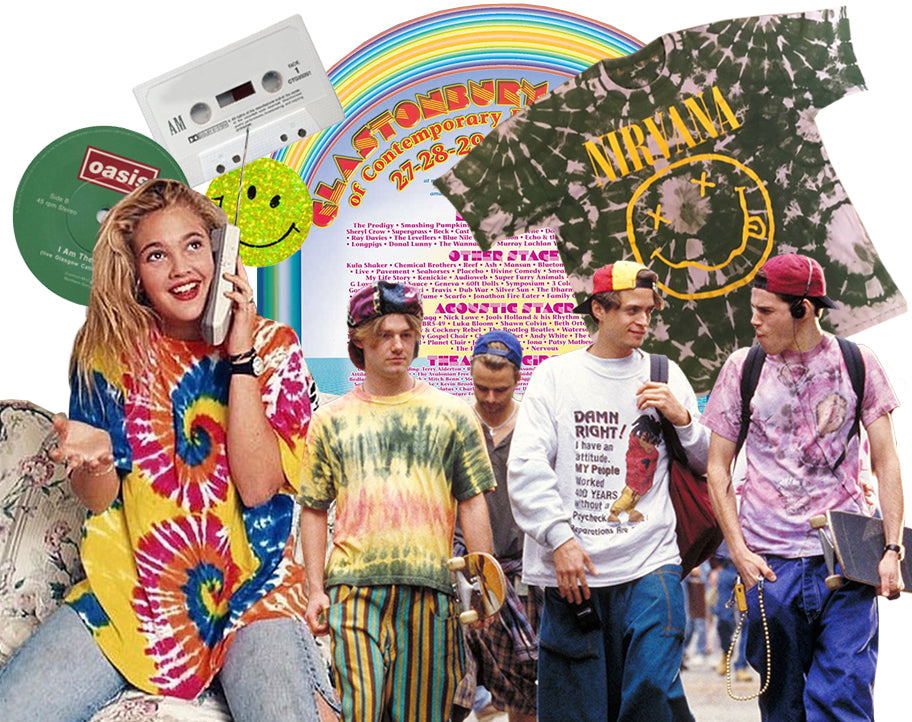WORDS BY REBECCA RHYS-EVANS
When you see tie dye, what do you think of? Hippies at Woodstock? How hot Heath Ledger looked in Lords of Dogtown? The fact you need to get your eyes tested? So drenched in nostalgia, tie dye is one of those trends that has you yearning for a by-gone time, one that maybe you weren’t around for in the first place.
Here at KOIBIRD we champion print and propagate colour, so it will come as no surprise that tie dye is a staple. It’s vibrant, one of a kind, and possesses a free-spirited attitude. The unofficial emblem of being chill, it’s not something you’ll find in the wardrobes of those that consider themselves serious. In fact, you can only really think of laid back, fun-loving people who wear it. Gigi Hadid? Yes. ASAP Rocky, Rihanna? Uh-huh. But Donald Trump? Definitely not. A trend that has gone in and out of fashion favour over the decades carries a rich history. It’s not just packet dyes and your dad’s Grateful Dead records lurking at the back of the loft, although yes, these are an integral part. It’s a symbol of freedom.











